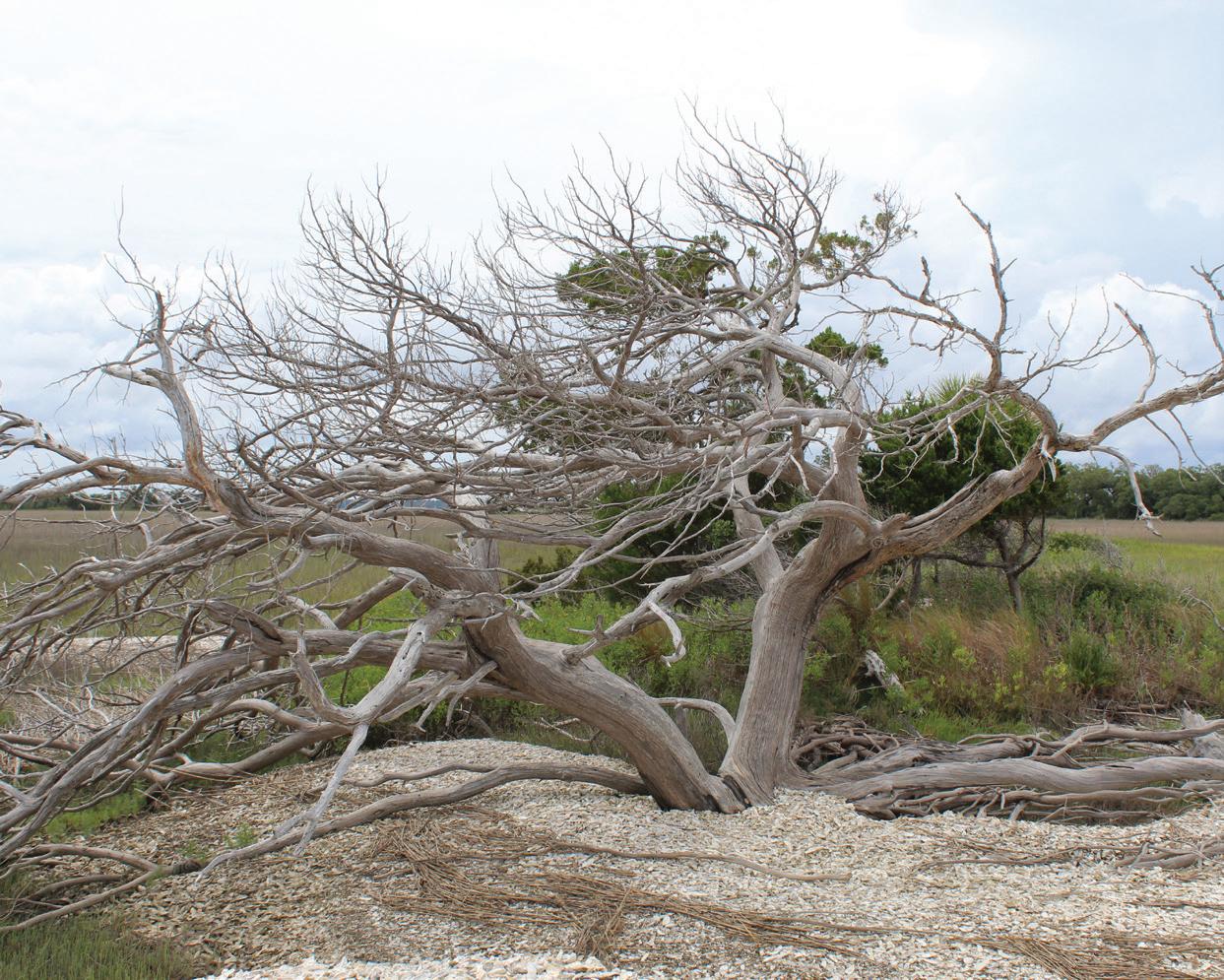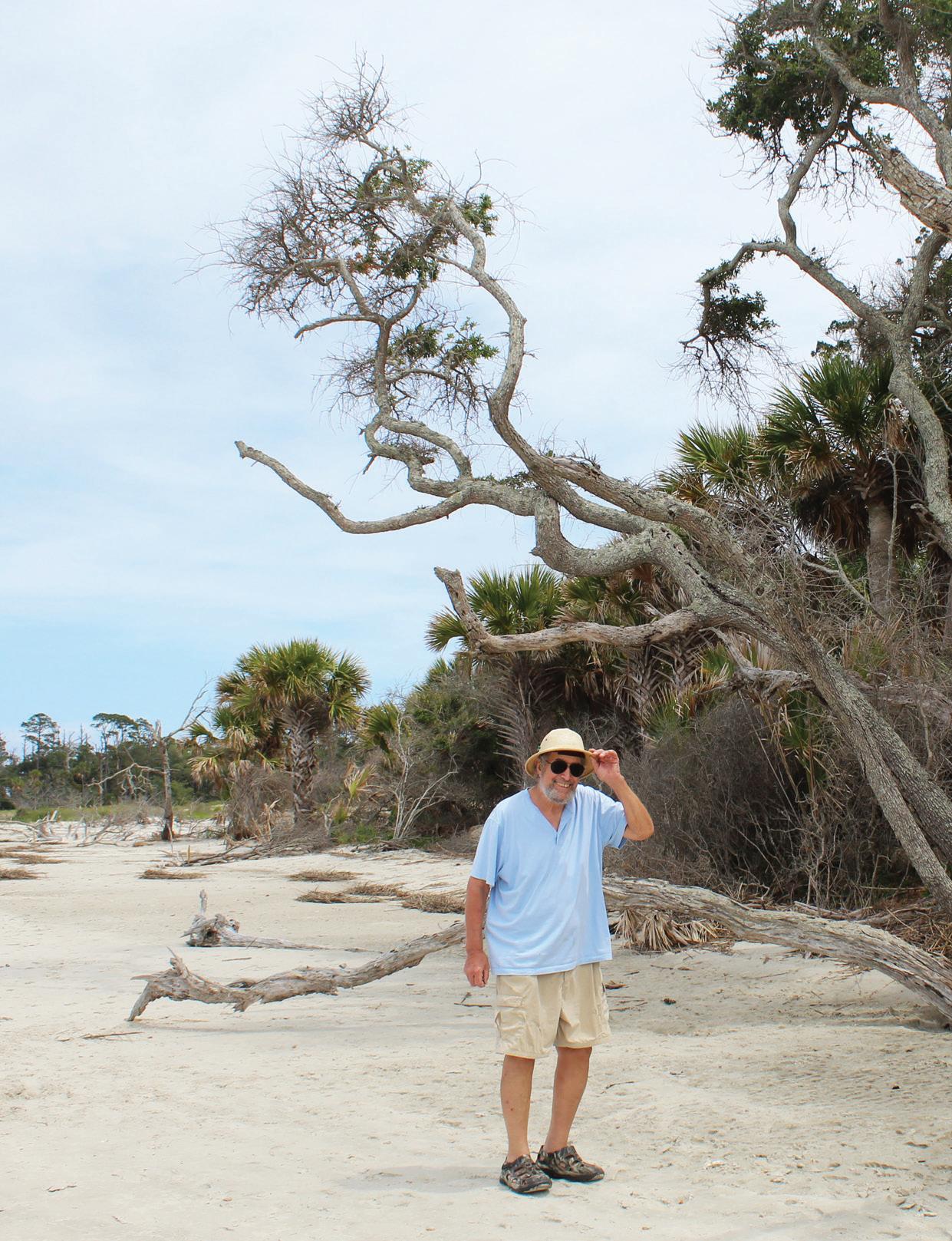
9 minute read
An Afternoon with a Naturalist
Article and Photos by Amy Thurman
It was a gloriously sunny morning when I headed for Isle of Hope. I was to meet up with our staff naturalist, and my friend, John “Crawfish” Crawford to go along with him on a boat ride and talk about the nature tour business he’s started, which he’s aptly called Sub-Tropical Naturalist.
Advertisement
Although he only retired six months ago from the University of Georgia, where he spent 33 years as a marine educator with UGA Marine Extension and Georgia Sea Grant, there’s no keeping this natural-born teacher out of the classroom. Especially not his classroom of choice: the creeks, marshes, maritime forests, and barrier islands of the Coastal Empire.
I drove through bad weather on my way to the marina and was a little concerned about the heavy gray clouds on the western horizon, but we were to be lucky and not a single raindrop fell on us that afternoon, though the overcast skies did provide some relief from the heat.
When I arrived at Isle of Hope Marina, Crawfish and I grabbed a quick lunch from The Burger Boat, which docks there for lunch on Wednesdays. After eating what we both agreed were easily the best burgers to be found anywhere, it was time to head out.
You might not be surprised to learn that he’s named his boat Spartina. The marsh grass that’s so critical to our coastal ecosystems, formerly known as Spartina alterniflora, was recently renamed Sporobolus alterniflorus, but just doesn’t have the pretty ring to it that we’re all so familiar with. “I still have my Spartina, though,” Crawfish jokes, patting the side of the helm console. And a good little boat she is, too. The 20-foot center console Carolina Skiff has a V-shaped hull that makes for a smooth and dry ride.
We motored up the Skidaway River to the Wilmington River then out into Wassaw Sound and Crawfish talked about the geology of the area. Having worked eco-charters for several years, and through the magazine, I’ve picked up a good bit of knowledge about the area, but talking with Crawfish is kind of like having all those bits and pieces tied together into a fuller understanding.
For instance, I remember on the eco-tour boats we used to tell guests that there’s no naturally occurring rocks in this area. Crawfish explained that the composition consists of layers of clay, sand, limestone, and sand stone, and that granite, or bedrock, is about a mile down.
We turned into Tybee Cut and motored on to the north end of Cabbage Island where Crawfish pointed out a small duck resting on the beach. “That’s a red-breasted merganser. They’re usually gone by now, but that one seems to be a little late leaving.” We pulled into a small tidal stream and set the anchor then walked along the oyster shell rakes to see what we could see. Almost immediately we came across a horseshoe crab carcass and John pointed out that it was male, and showed me one way to distinguish sex – the front of the shells of male horseshoe crabs are more deeply bowed, which allows them to attach to females for mating.
A little further along the rake we came across another horseshoe crab and this one was huge! She had to be 15 inches across and about 18 inches long, not including her tail. When Crawfish flipped her over, we discovered she was still alive.
“We can save this one,” he said, then picked her up and handed her to me. I carried her to the water’s edge and carefully placed her in it, thrilled to see her swim away.
Back in the boat we motored on, making our way around Cabbage Island toward Williamson Island, which is now little more
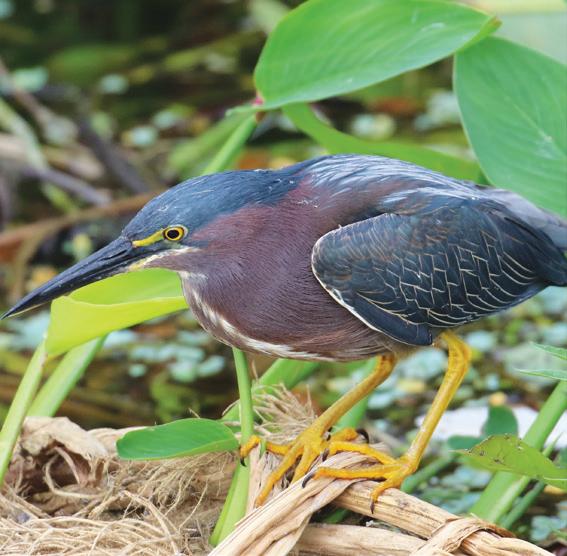
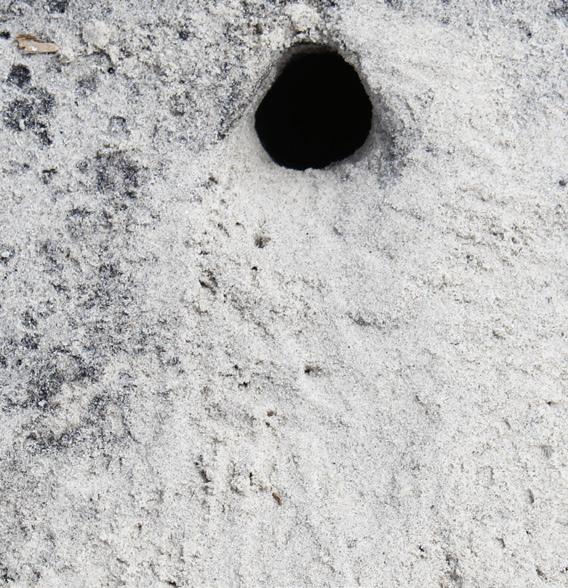
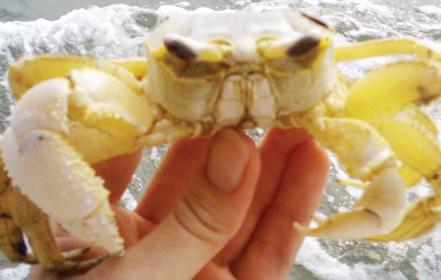
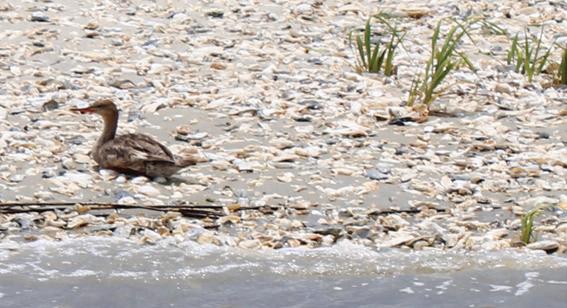
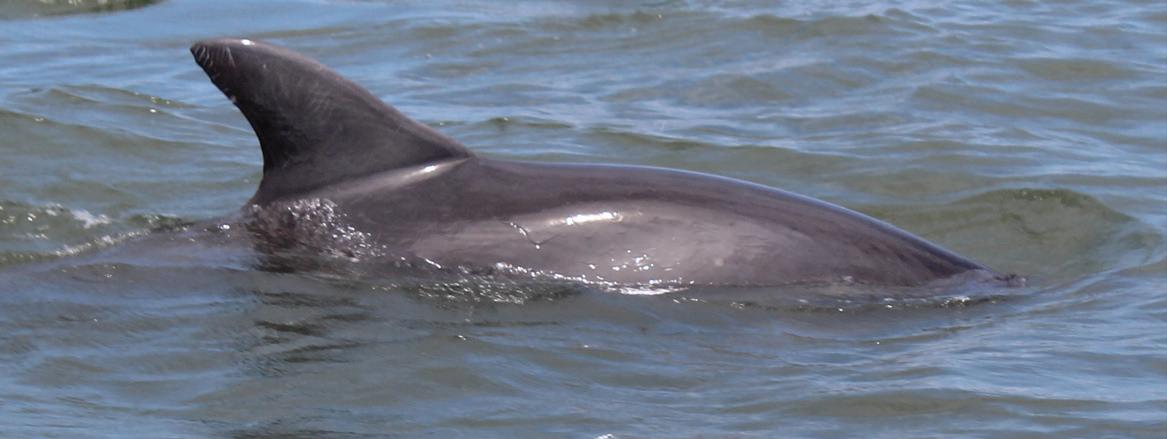
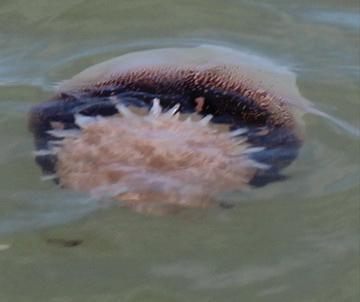
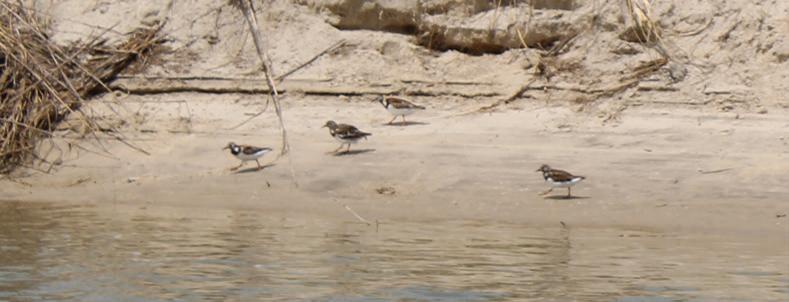
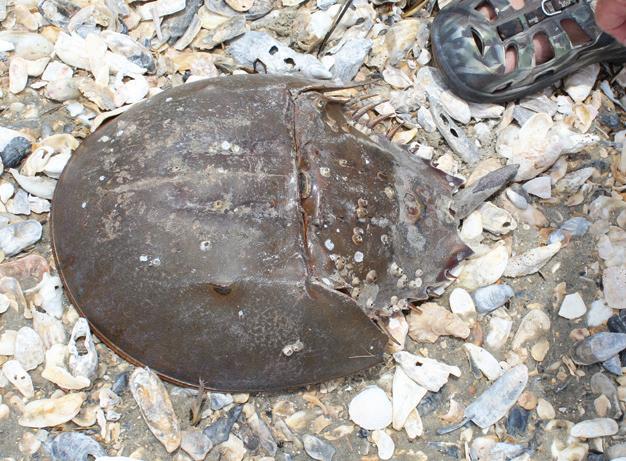
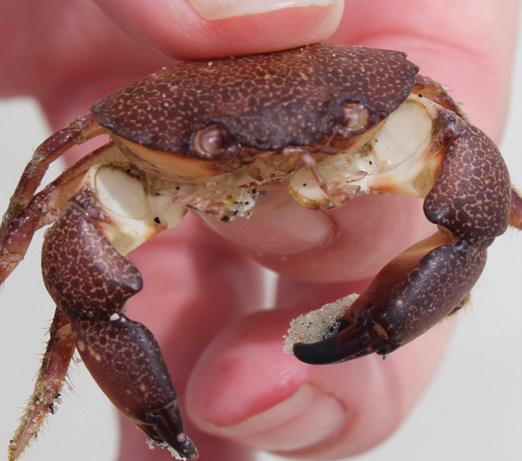
Critters everywhere! Opposite page top: Crawfish pointed out a beautiful green heron in flight but I was unable to get a good photo of it, so Tim Keyes, with GADNR, provided this image. Opposite middle, inset and main image: A ghost crab and the hole it burrows into the sand above the high tide line. Opposite bottom: A red-breasted merganser, resting on a shell rake on Cabbage Island. This page, top: I lost track of the number of dolphins we saw that afternoon, everywhere we went! Middle left: A cannonball jellyfish in the waters of Wassaw Sound. Middle right: Ruddy turnstones hunting for food on the bank of Mill Creek, Wassaw Island. Above left: A large female horseshoe crab that was stranded but still alive. We returned her to the water and were happy to see her swim off. Above right: A mud crab, relative of the stone crab, found on Wassaw beach.
than a large sandbar. Crawfish said it hadn’t been an island at all when he was a kid, merely a sandbar off Petite Chou (pronounced petty choo, French for “little cabbage”), now also known as Beach Hammock. I remembered when I first arrived in Savannah and Williamson was a frequent stop on eco-tours. It had large dunes and beaches that, especially in springtime, were teaming with life: horseshoe crabs nesting on the beaches, sea birds everywhere, and sea stars, urchins and various crabs in the shallow waters surrounding it.
We crossed Wassaw Sound and followed the beach around to the west where we rounded the point and entered Mill Creek. This tidal creek winds deep into the island and as we followed it, John share more about the birds we saw, the marsh plants and trees growing in the marsh along side it, and the history of the island. Wassaw was originally privately owned, but the family sold most of the island to the Nature Conservancy to protect it from development, keeping only a small plot that the descendants still use today. The Nature Conservancy then sold it to US Fish and Wildlife Service for $1.00, to become a national wildlife refuge.
We went as far up the creeks as possible, where deadfall from recent hurricanes blocked the channel, then returned and beached the boat to go explore. There were a couple boats anchored along the beach and a man and his sons were fishing off the point, but otherwise the beach was deserted. As we walked, Crawfish pointed out some edible plants, which of course we tasted (salty, but would make nice additions to salads), and showed me how to make a “needle and thread” from a yucca leaf. He also pointed out small numbered signs placed every hundred meters along the bluff and explained that they’re used by sea turtle groups to map sea turtle nests. Then he exclaimed, “Oh look! Turtle tracks!” And sure enough, there in the sand were the distinct marks left by flippers as a sea turtle crossed the sand looking for a nest site.
“This was a false crawl,” he explained, referring to the fact that the tracks led back to the water and no nest was evident. “She chose not to nest here for some reason.”
Clouds were building again to the west and we decided to start making our way back to the dock, but first we stopped at Dead Man Hammock where Crawfish once again anchored the boat. The “beach” here was a massive shell rake, composed of thousands of loose shells, mostly oyster, but with the occasional clam shell mixed in. The rake arced gracefully around the curve of the hammock with levels of varying heights. When I told Crawfish that the tops were flat and were almost like footpaths, he explained that these were storm event ridges. Strong wave action washed the shells up and deposited them as we found them. “Not everyday wave
As we explored marshes and beaches, Crawfish pointed out numerous edible plants. Please be certain of the identity before you sample anything! From top: Saltwort (Batis maritima); American sea rocket (Cakile edentula); American glasswort, or pickleweed (Salicornia virginica). All are fairly salty, no surprise given that they grow in the salt marsh and high on the beach. All are also slightly bitter, with more mature plants having a stronger flavor. All are good additions to salads and can be eaten raw or cooked. Glasswort may have been used by Native Americans to treat arthritis pain and inflammation.
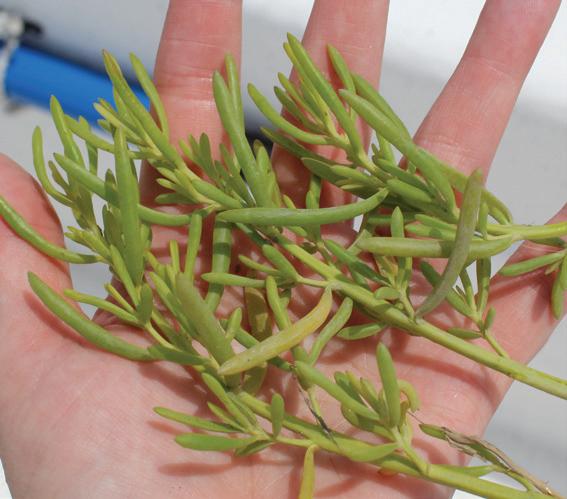
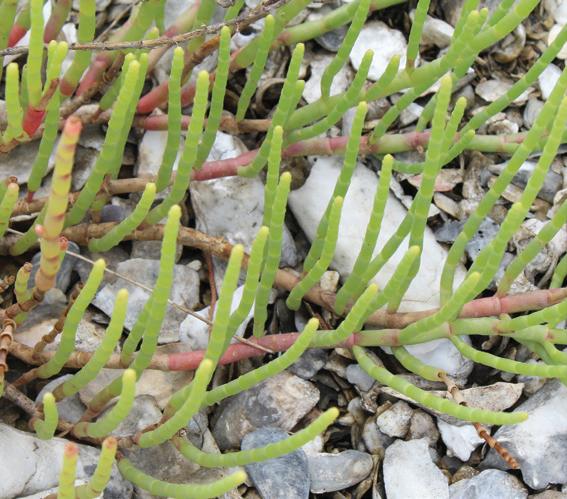
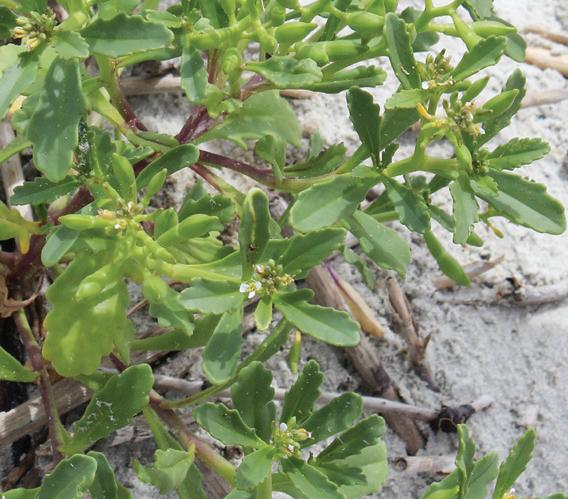
They may have changed the name of our marsh grass, but I still have my Spartina!
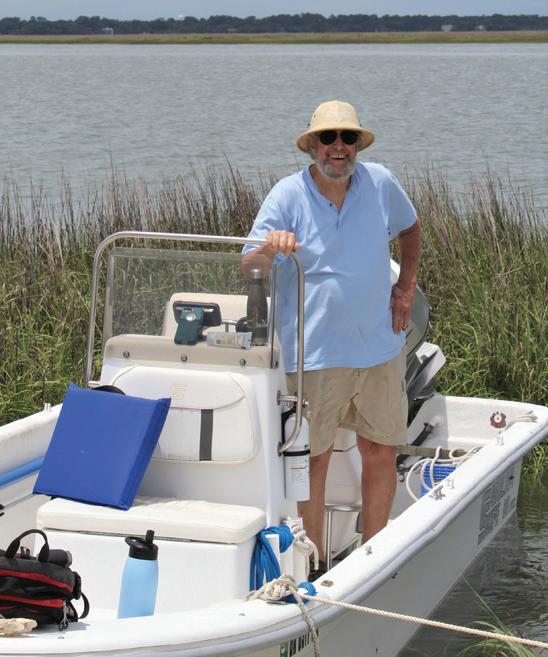
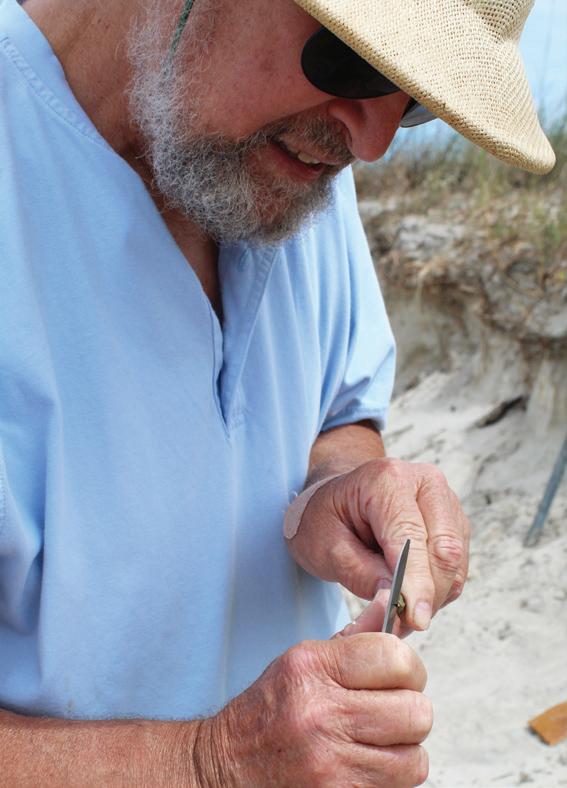
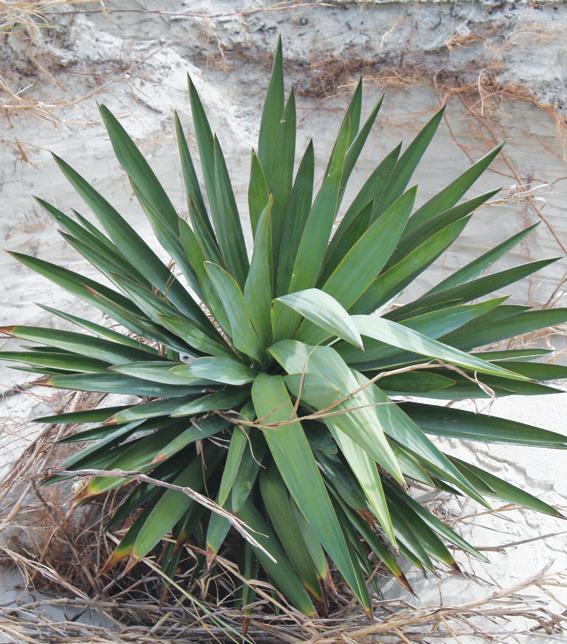
Above: A Yucca filamentosa plant, commonly known as Adam's needle or Spanish bayonet, growing on the beach on Wassaw Island. Left: Crawfish demonstrating how to whittle the frond into a "needle and thread."
action, but strong storms like Nor’easters or tropical storms and hurricanes,” Crawfish said.
To look at the rakes in that light gave an impressive example of the strength of wind and wave action. That thought, coupled with the name of the hammock, and it wasn’t a place I’d want to be in bad weather.
Back at the dock, Crawfish and I sat at a table in the marina’s pavilion and talked a little longer about his new business, good burgers, moonshine, terrapins, manatees, boats, and any number of other topics before we parted ways with promises to visit again soon. I look forward to our next trip, and if you’re as fascinated with our coastal area as I am, I’d suggest booking a trip with Crawfish. He’s an amazing and entertaining teacher and you’ll leave him with a greater appreciation for the natural wonder of our coastal region.
A windswept red cedar on a shell rake on the east end of Dead Man Hammock. Crawfish remembers when it was green and healthy! Red cedar wood is insect resistent so these trees stay around for a very long time. Sub-Tropical Naturalist, LLC, will offer halfday and full-day trips that will vary by tides and seasons. As Crawfish says, “We’ll go see what we can see!” This might include beach combing, exploring tidal creeks, bird-watching, natural history, area ecology, wildlife studies, and more. He’s eager to share his knowledge and experience with you! To book a trip with Sub-Tropical Naturalist, email Crawfish at subtropicalnaturalist@gmail.com or call (912) 657-1651. To watch a video tribute to John by Morton House Media, visit bit.ly/crawfish_tribute.
